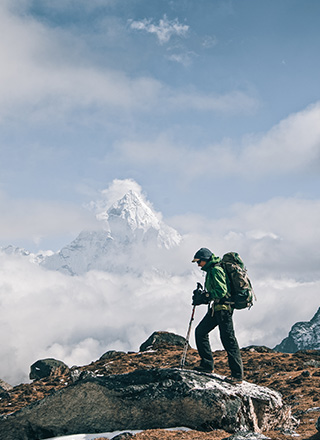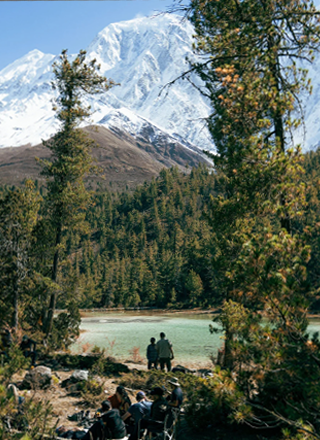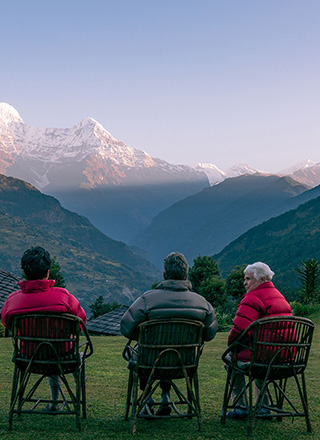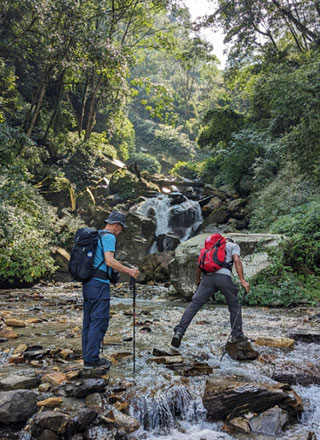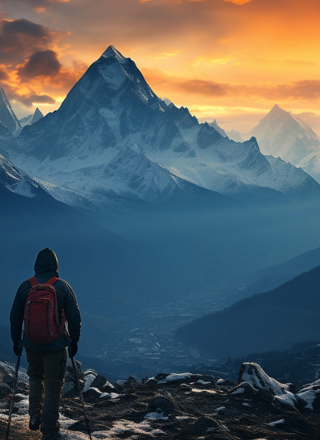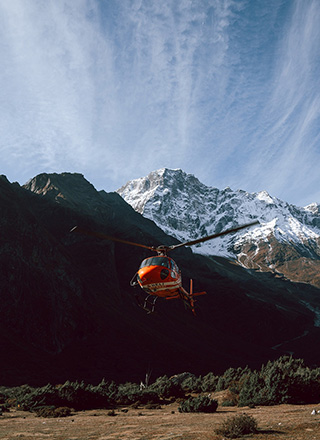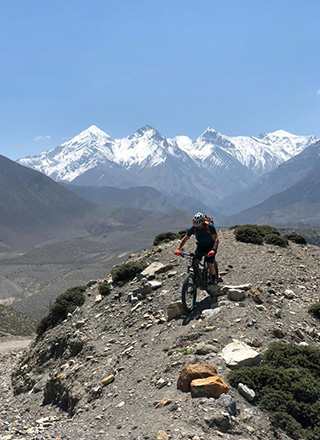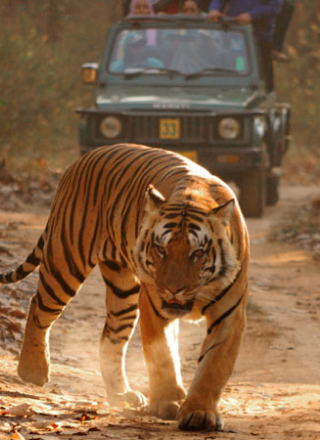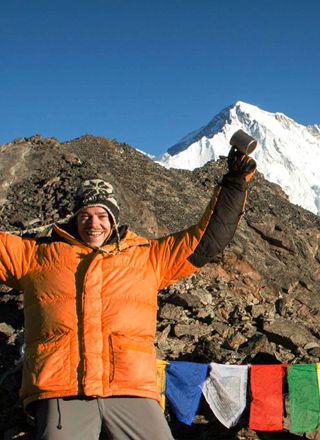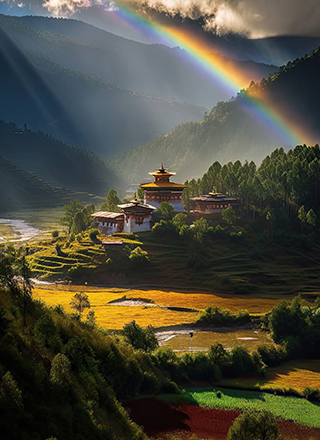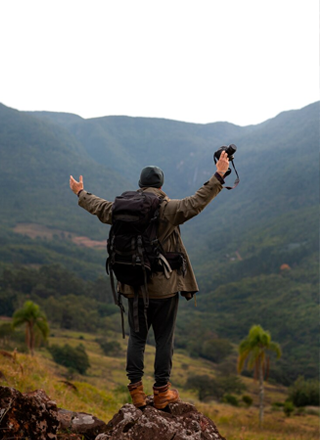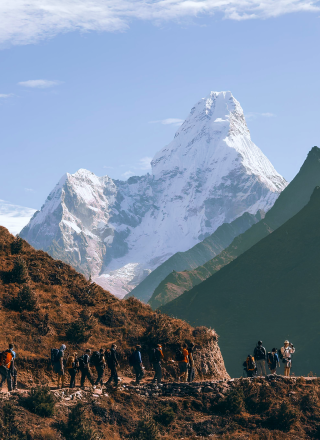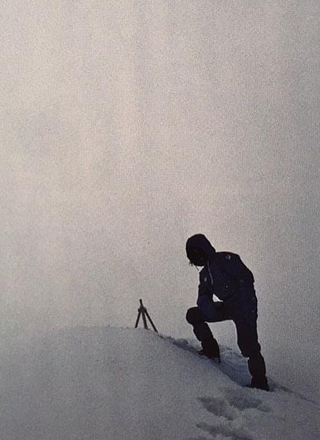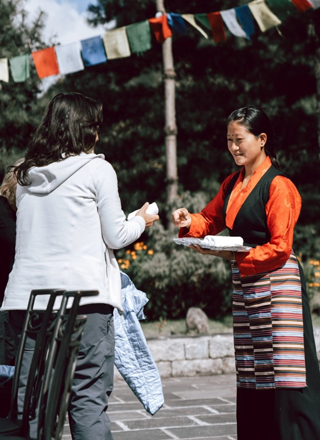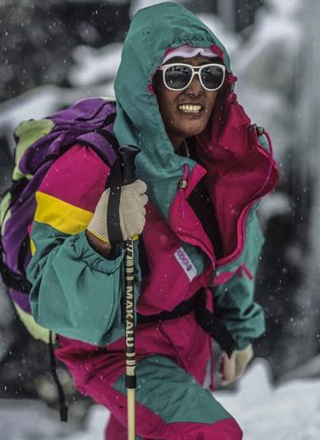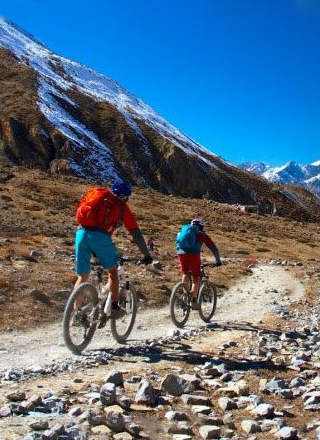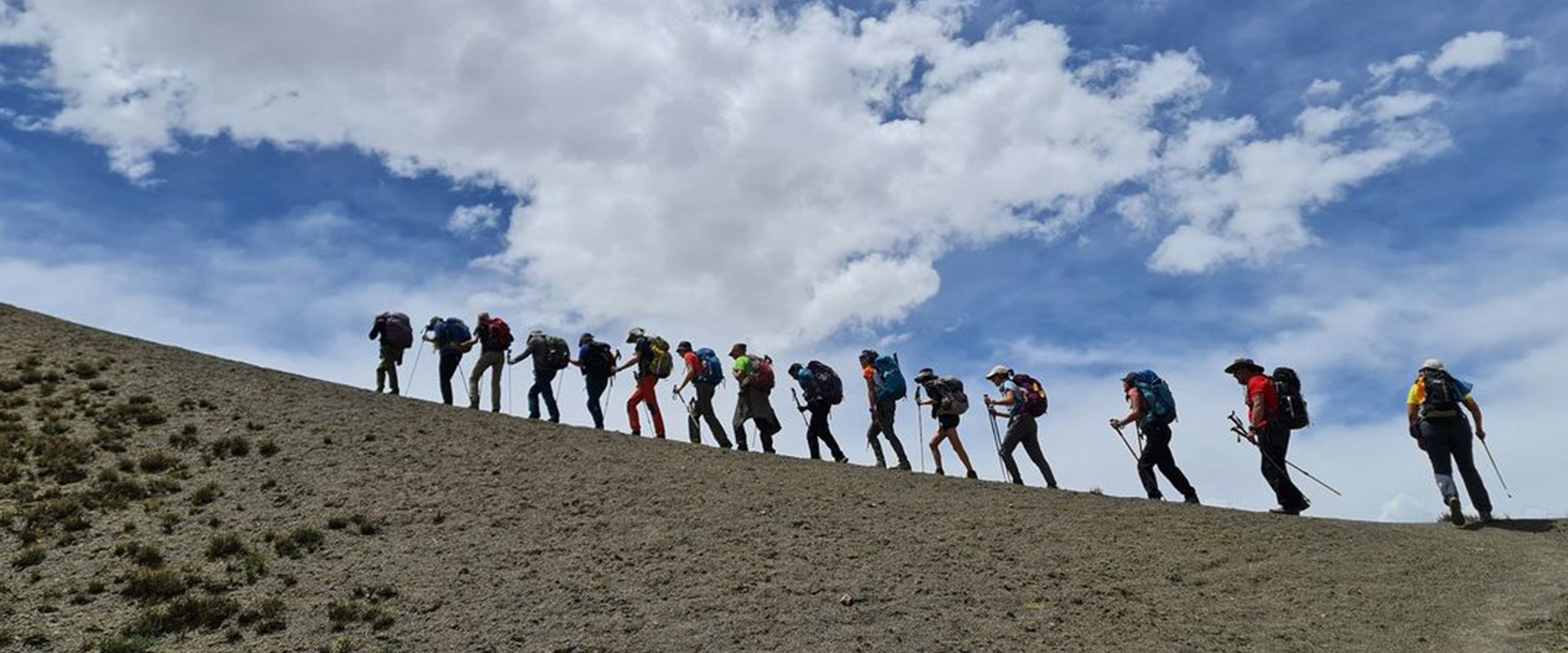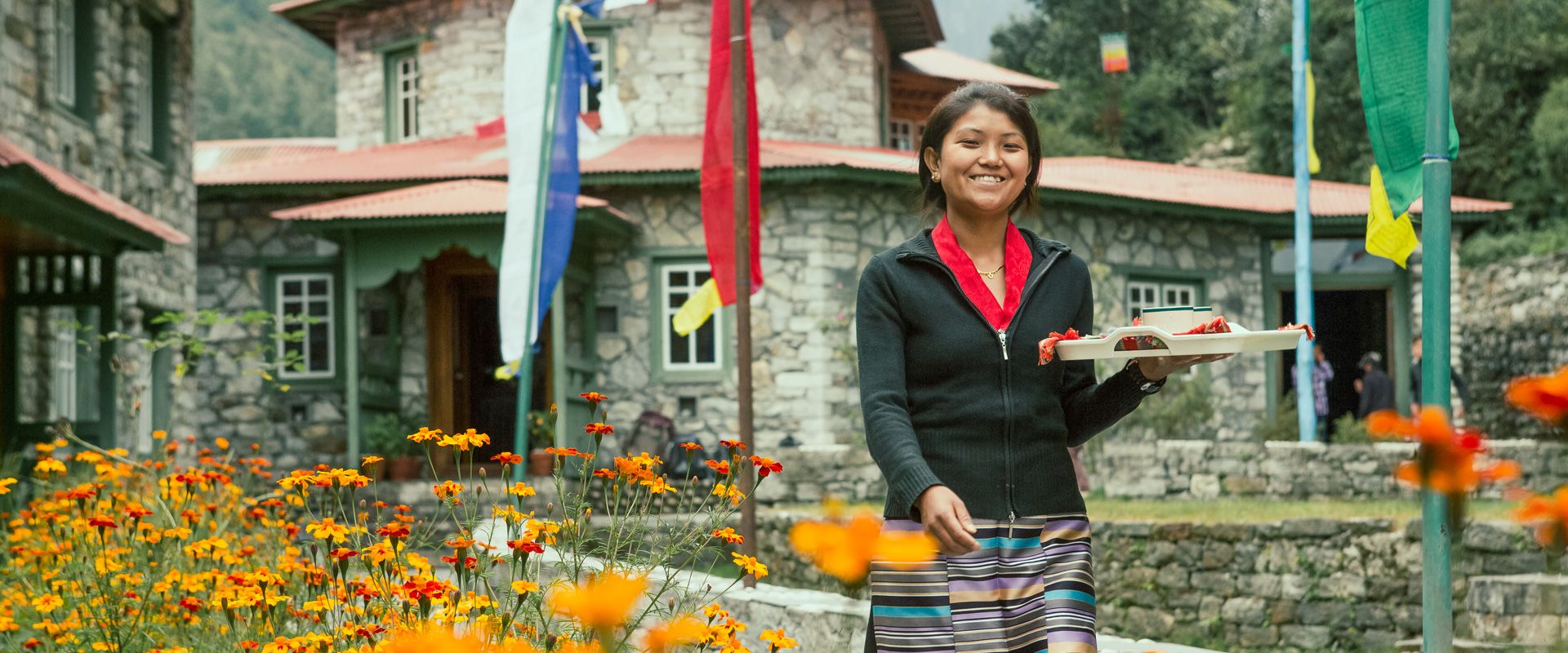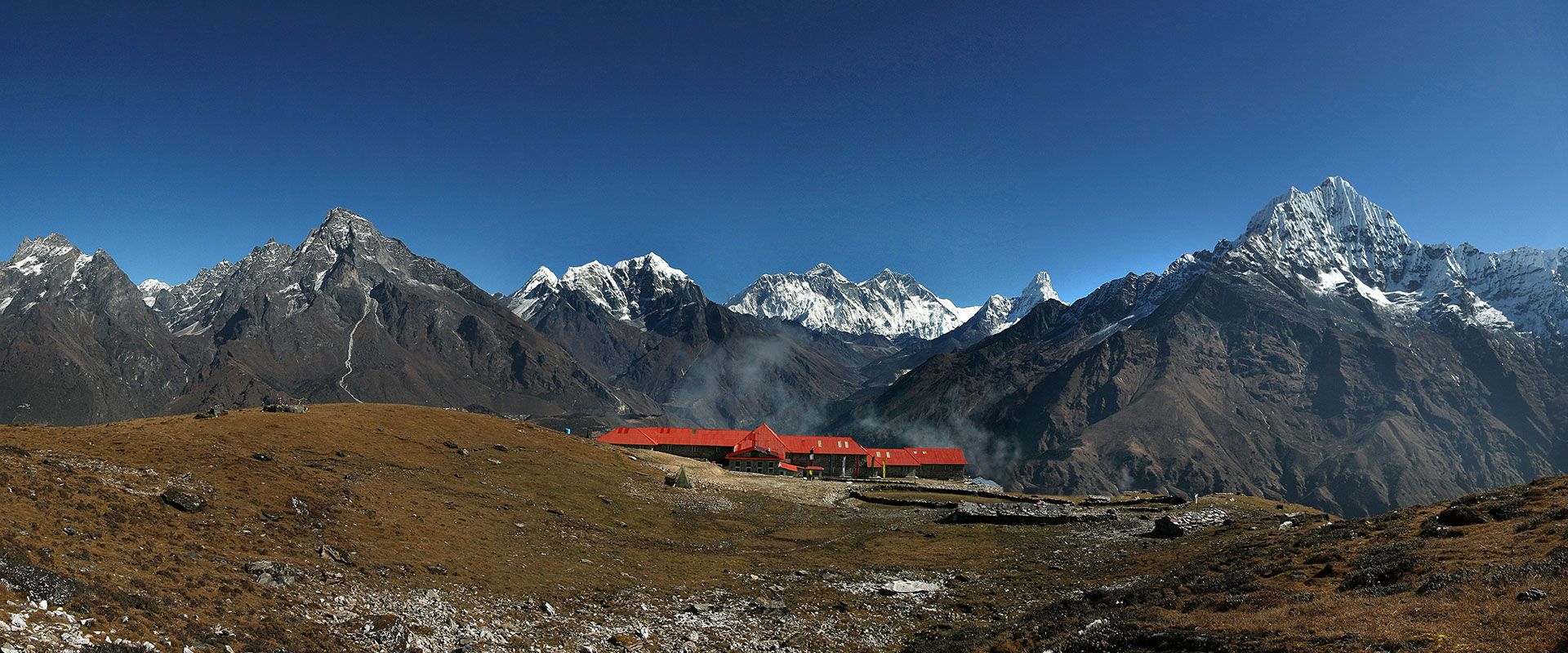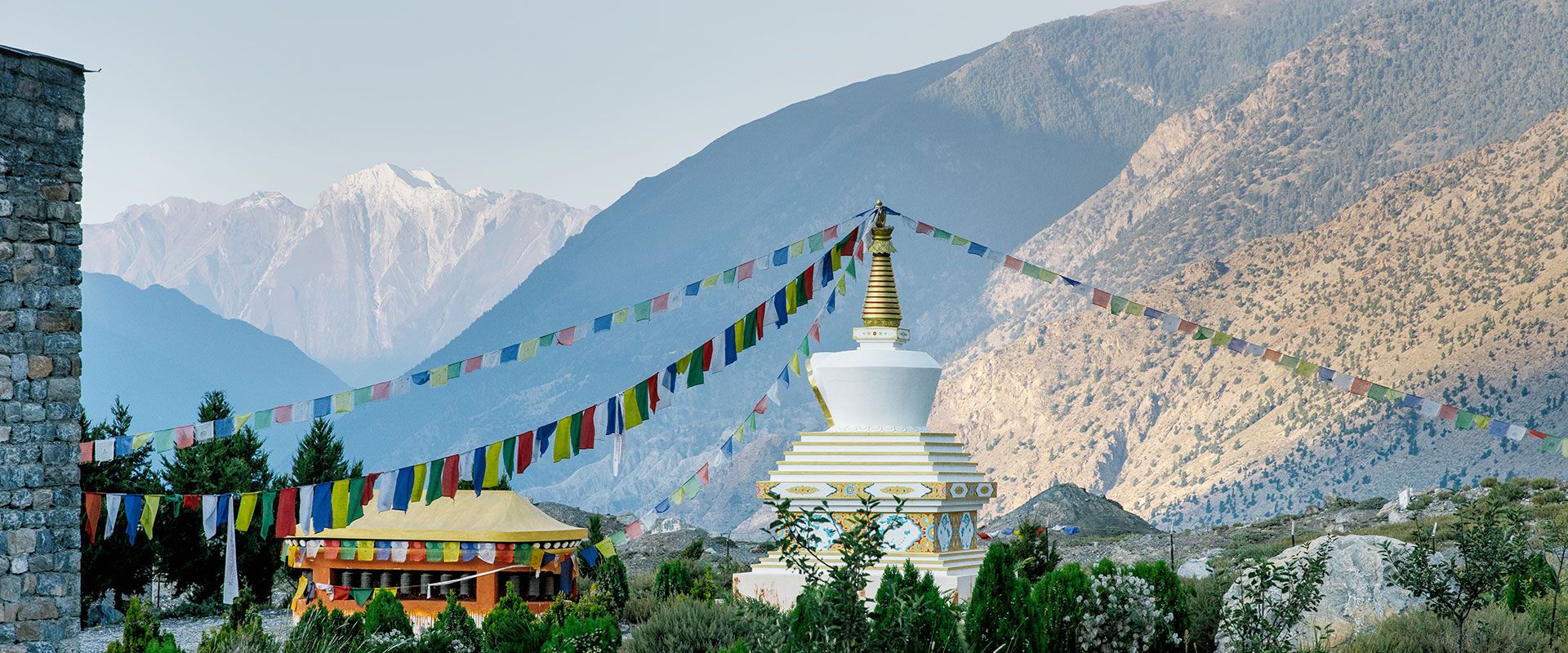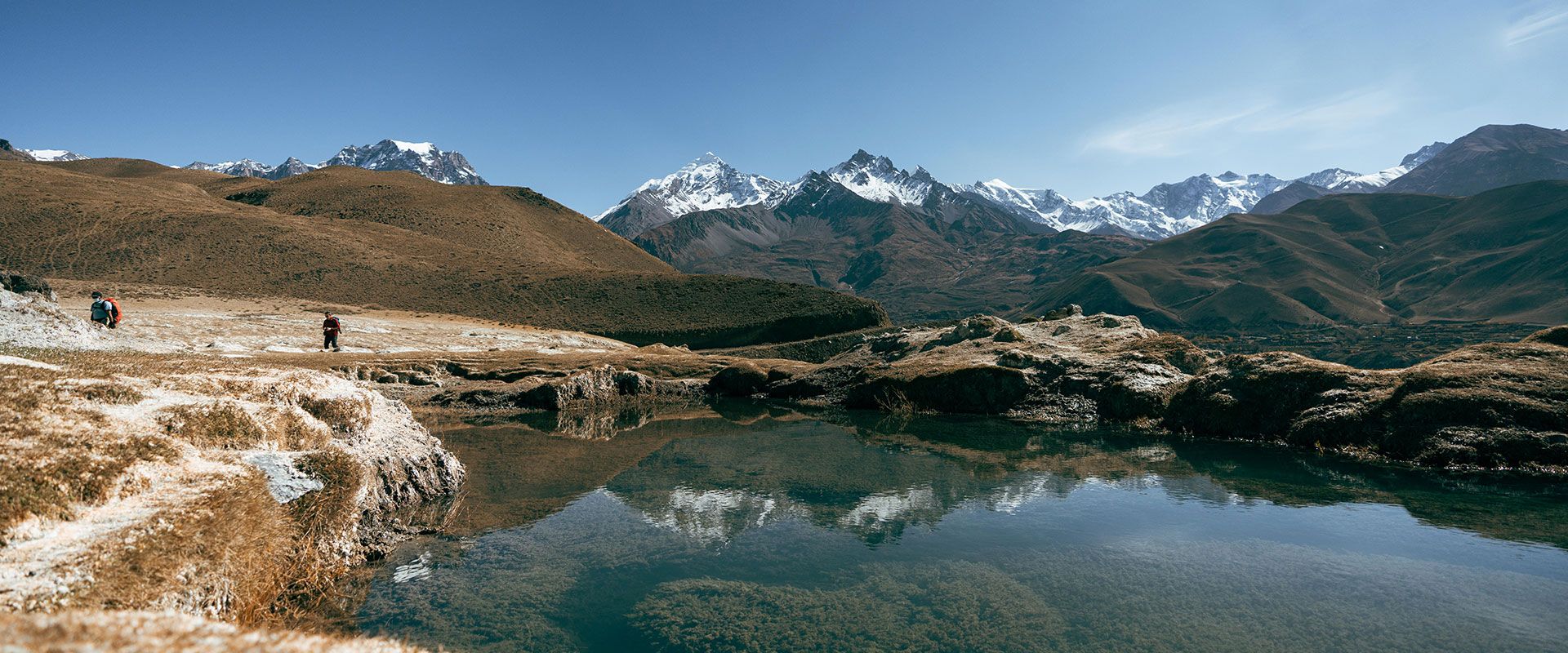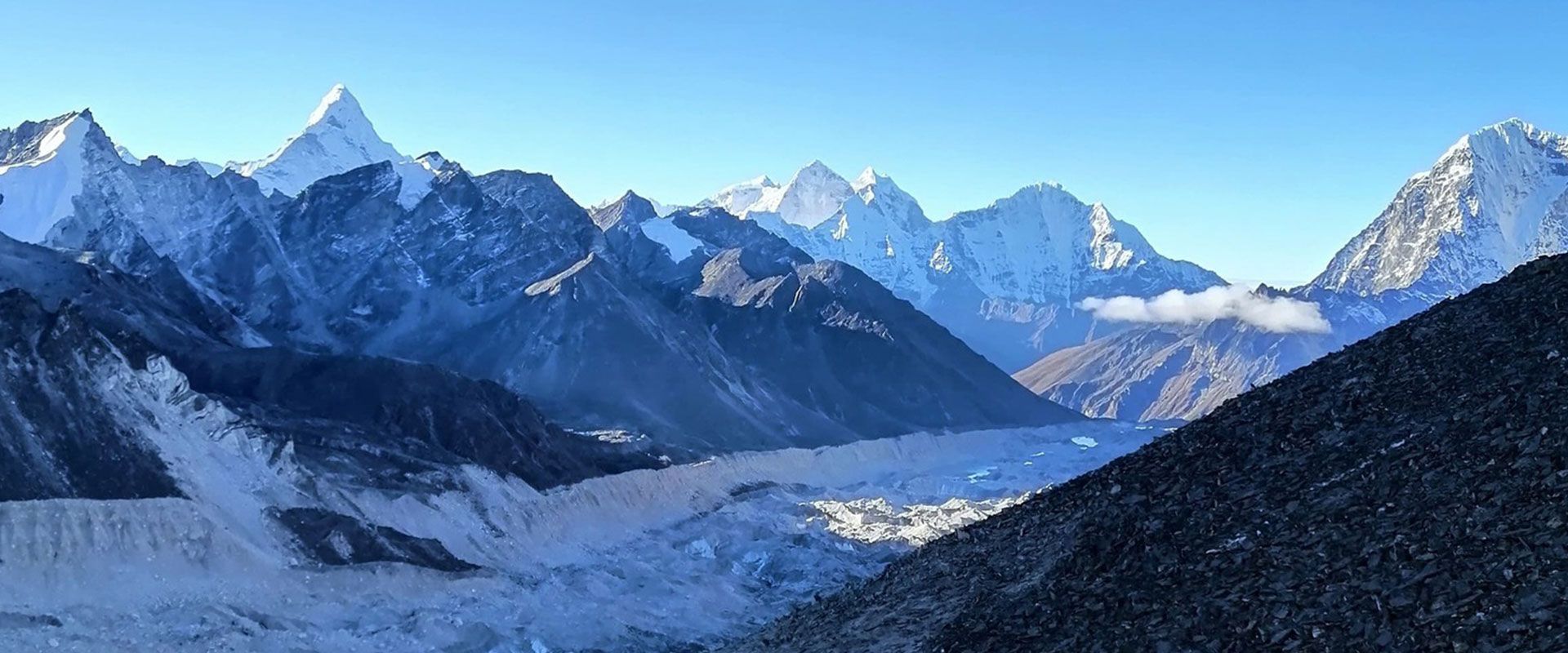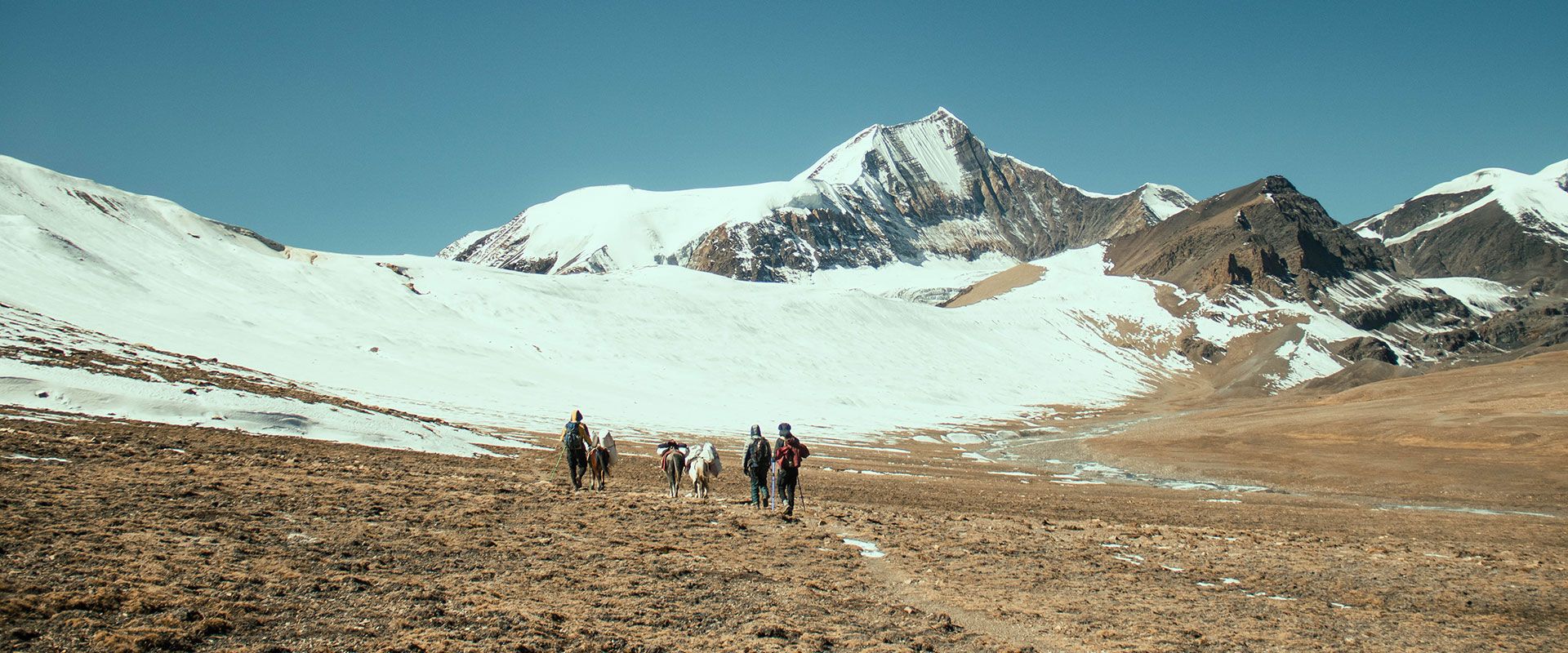- Travel Styles
- Destinations
- Signature & Charity Treks
- Special Project
- About Us
- Contact Us
23 days
21 Nights
Annapurna 7 Passes Trek
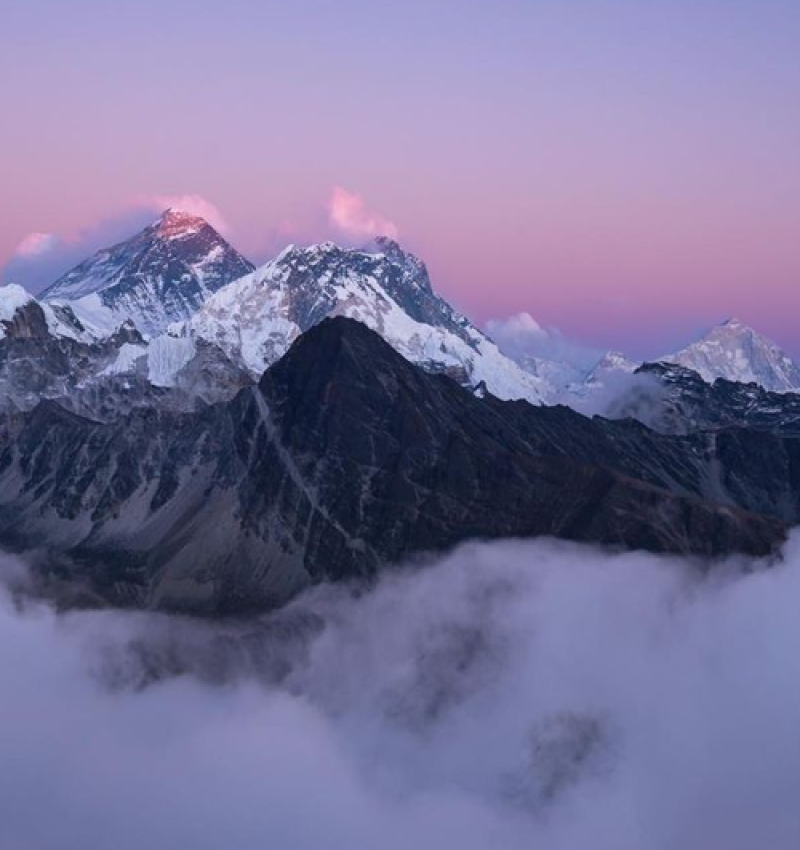
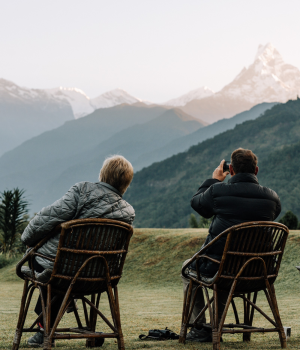
OVERVIEW
A Journey through the Hidden Trails of Nepal
This trek includes challenging hikes, stunning mountain vistas, encounters with diverse cultures, and exploration of hidden gems like the Phu and Nar villages, Kangla Pass, and the sacred Muktinath Temple.
Each day offers a unique blend of nature, culture, and adventure, promising an unforgettable experience in the heart of the Himalayas.
Trip Overview
Destination
Region:
Activity:
Max. Altitude:
Type:
Group size:
Difficulty:
Highlights
- Conquer passes like Kuchumro (5,490m), Nar (5,400m), and Kangla (5,350m) with stunning views of Himalayan giants like Annapurna and Manaslu.
- Trek through remote Gurung and Tibetan villages, experiencing local culture, visiting monasteries, and sacred sites.
- Journey through forests, high-altitude deserts, and glacial rivers, with scenic campsites amidst the mountains.
ITINERARY
TAILORED TRIP FOR YOU
Arrival in Kathmandu
Depending on your arrival time, our representative will be at the airport to receive you and transfer you to your booked hotel.
Overnight in Hotel
Meals: B
Drive to Tal – 12 Hrs Drive
An early morning breakfast and we drive to Besisahar. We drive early to avoid the through the paved road from Kathmandu until Besisahar. We stop over for a lunch at Besisahar where we change our vehicle and use the Jeep from here until Tal as the roads are off route. We stop over shortly at the checkpoint in Khudigoan. Crossing several iron bridges and a tunnel made by Chinese government building a 50MW hydropower.
We arrive at Chyamje where will stop for a quick tea and enjoy the waterfall and continue driving through the bumpy road to Tal which is a beautiful village situated at the bank of Marshyangdi River. The Gurung village with around 300 people has comfortable lodges where we spend the overnight after the long drive from Kathmandu.
Overnight in Lodge
Meals: BLD
Trek to Tilje (2300m) – 6/7 Hrs Trek
After breakfast, we start our walk through the village and continue by the side of the Marshyangdi River flowing through the valley. 2 hrs. of walking brings us to Khotro (2200m) from where we start uphill towards Nache (2200m) for around 2.5 hrs. Nache is a village situated on a top of hill with around only 40 households and few homestay. We have our lunch here in Nache and continue our trek with a short descend to a long suspension bridge of 130m long. One of highlights of the day is this suspension bridge from where village of Bagarchap, Dharapani and Timang along the Marshyangdi corridor is visible from the high suspension bridge. We continue our trek along the pine forest where we can visit a small Monastery and continue walking to meet a motor road and cross a small suspension bridge to arrive at Tilje. Tilje is another small village that is used for the Manaslu trek route for overnights.
Ascend: 1235m
Descend: 513m
Overnight in Lodge
Meals: BLD
Trek to Tachai (2340m) – 5 Hrs Trek
We start our walk today through the village today and cross a small bailey bridge and continue walking for another 20 minutes. A shot detour brings us to a stalagmite cave. A small cave that is interesting to visit where lamas are believed to have meditated.
After the short detour we continue walking through the pine forest and corn fields to arrive at a suspension bridge. A short walk of 10 minutes brings us to a resting spot. We continue walking through the forest for another 1 hr to arrive at Tachai, a small Gurung village rested at a top of hill. The village has around 28 home stays where we will stay for the overnight. The village also has a hot spring water flowing 20 minutes’ walk from the village.
Ascend: 2340m
Descend: 730m
Overnight in Lodge
Meals: BLD
Trek to Shongle (3360m) – 8 Hrs Trek
We start our walk today with a beautiful view of surrounding villages of Ghelinchok and as we head up we look back to see the beautiful Tachai where we spent an overnight. Our walk today will be strenuous as we ascend uphill from the village itself for about two and half hours. We arrive at the saddle of Chonga Dada (3282m). Animal sightings such as Himalayan Griffon and Monkeys will be possible. After resting for some time, we descend through the pine forest to meet the Chonga River. We continue our path by the river upstream with gradual uphill and cross the river through a small wooden bridge. We continue our walk for about an hour and have our first lunch prepared by our kitchen staff by the side of the river.
As we gain altitude, we continue our walk through the pine and rhododendron forest to arrive at an open space for Shongle Kharka where we spend our first overnight in tent.
Ascend: 1250m
Descend: 54m
Overnight Camping
Meals: BLD
Trek to Kuchumro Phedi (4217m) – 4/5 Hrs Trek
A fresh morning with giant hills on both sides, we have our breakfast prepared by our kitchen crew and start our trek as our staff pack up the tents. 45 minutes of walk and we will meet a small shepherd hut. We continue our climb towards Kuchumro Phedi at an altitude of 4525m where we spend our camp for the big climb next day.
Ascend: 814m
Descend: 62m
Overnight Camping
Meals: BLD
Trek to Namakyu (4445m) Vai Kuchumro Pass and Yarcha Pass – 10 Hrs Trek
We gear up a long walk today with mostly going uphill until we cross the Yarcha Pass. We start our day with view of Manasalu towards the east and Lamjung and Annapurna towards the west. A walk of about 2.5 kilometers brings us to the top with 3 hrs of walk. We are rewarded with amazing views of Manasalu and Lamjung range as we make a pass of Kuchumro. The snowy pass requires proper equipment like gaiters, crampons. Once we pass the Kuchumro pass (54900m), we walk down about 30 minutes to start uphill to cross the Yarcha pass (4860m). As we cross Yarcha pass, we are rewarded by the views of Kangaru Himal (6941m) and Annapurna II. We continue walking downhill to arrive at Namakyu (4595m) where we spend our overnight after a long walk. We will camp by the river side directly facing the Lamjung Himal and view of Kangaru Himal.
Ascend: 1144m
Descend: 693m
Overnight in Camp
Meals: BLD
Trek to Meta (4204m) via Meta Pass (4635m) – 8 Hrs Trek
Wake up early for the early morning views of Lamjung Himal, Annapurna II and Gangapurna towards the south west and Kangaru Himal facing top towards the north. The clear sky with the views of mountains makes it a perfect ambience to start your day. After breakfast, we walk for about 10 minutes uphill and then descend for another 15 minutes to cross a small glacial river. We cross the river for gradual uphill facing Annapurna II the whole time and keeping Kangaru Himal at the back. As we ascend for 2 hrs. we are greeted by the views of Pisang peak standing majestically above the Pisang monastery from where we take gradual walk all the time facing Pisang peak directly in front of us. We arrive at the Meta pass (4800m).
Pack lunch is recommended today as there is shortage of water before the pass. After lunch at Meta pass, we start to descend towards Meta. It’s a long downhill from Meta pass to Meta with almost 4 hrs. We arrive a river with a small bridge from where we start to ascend for another 1 hr to reach Meta – a small village with few houses.
Ascend: 566m
Descend: 1450m
Overnight in Camp
Meals: BLD
Trek to Phu (4204m) – 9 Hrs Trek
Today is a moderate but long walk. We get the early morning sunrise view of Lamjung Himal on the south and Pisang peak towards the west. After breakfast we start with a gradual easy walk with view of Pisang monastery on the other side of the hill. We come across a Khampa settlement at Jhunum after 1.5 hrs. This Khampa settlement is now used as a winter stay by villagers of Nar. We continue our walk from here to cross a glacial river and continue walking to arrive at another Khampa settlement at Chyakhu. (Recommend reading: Buddha’s warrior for more info on Khampa war).
We walk further with gradual uphill and then descend to arrive at a small bailey bridge to cross the river from where we start ascending for about 20 minutes to arrive at Kyang. Another Khampa settlement at the valley between huge rugged stone mountains. We will have our lunch here and after lunch we continue our trek to arrive at an interesting trail facing the river and made from cliff carved trail. We continue on this trail with Phu River on the left side for another 3 hrs to meet a wooden bridge. Cross the bridge and continue walking. During the monsoon, if the river is high we continue walking on the same side instead of crossing the bridge.
As we approach the final descend for the Phu, we arrive at big canyon from where a straight uphill of 15 minutes brings us to the gate of Phu village and another 30 minutes’ walk brings us to a suspension bridge and we are official in Phu village.
Ascend: 1213m
Descend: 1030m
Overnight in Camp
Meals: BLD
Trek to Loang (4680m) via Phu Pass (5200m) – 7/8 Hrs Trek
An early morning walk to the Tashi Lakhang Monastery, an important Buddhist religion site. It takes about 30 minutes to reach the monastery and then return back for breakfast. We are served with the views of Himlung Himal and Kangaru Himal. We start our trek through the village of Phu and start climbing walking through the scree field to gain about 1000m above the Phu village. Continue walking will bring us to the viewpoint from where the Himlung, Bhrikuti and Kangaru Himal are visible quite prominently. The Phu pass is another 1 hour of moderate walk.
We cross the Phu pass and start our descend to arrive at the base of the hill to cross a small wooden bridge and start descending for another 1 hour to arrive our camp for today at Loang. Pack lunch is recommended today due to shortage of water along the way.
Ascend: 830m
Descend: 164m
Overnight in Camp
Meals: BLD
Trek to Chekchu (4410m) via Nar Pass (5400m) – 6/7 Hrs Trek
Wake up in the morning to the views of Himlung and Kangaru Himal. We start our trek ascending towards the Nar pass. The view of Himlung and Kangaru Himal stays with us along our way till Nar pass (5400m) which takes about 3 hours of walk. As we approach the pass, the scree fields makes it rather challenging to reach the pass. However, when we reach the top, we are greeted with 360 degree views of the mountains including Bhrikuti, Himlung, Kangaru towards the east and Chulu and Annapurna range towards the south west.
After taking enough photographs and enjoying the views, we descend from here to lose about 1400m through the scree field to arrive at Checkchu where we camp for the night.
Ascend: 443m
Descend: 871m
Overnight in Camp
Meals: BLD
Trek to Nar Village (4110m) – 5 Hrs Trek
After breakfast, we start to descend for about 1 hour until we reach a suspension bridge from where we start to ascend towards the Nar village for another 2 hrs to reach the top. From here we continue for another 20 minutes to arrive a small valley with surround big hills with cave formed on the top of it. A steep uphill here for another 3 hrs will bring us to the beautiful Nar village where we spend our overnight.
Ascend: 315m
Descend: 871m
Overnight in Camp
Meals: BLD
Trek to Kangla Phedi (4530m) – 3 Hrs Trek
An easy day today, we can visit the Nar Village and the surrounding after breakfast. We will leave Nar village after lunch, taking easy walk from Nar through the Pisang valley with Pisang peak on the left side and other snowcapped mountains on the right.
We arrive at the Kang La Phedi (4530m) after 3 hrs. of walk and camp here for our final pass the next day.
Ascend: 325m
Descend: 18m
Overnight in Camp
Meals: BLD
Trek to Ngawal (3360m) via Kangla Pass (5350m)
We start to ascend early morning today towards the Kang La pass in order to reach early for a great views of the Pisang peak and Chulu Far East peak before heading down to Ngawal. We start our walk crossing a small glacial stream. We ascend gradually to the top ridge of Kang La for 3 hrs. The top of Kang La offers amazing views of Annapurna, Chulu range, Lamjung Himal.
We descend from the Kang La pass through the scree field with wide valley and amazing view of the landscape. The descend takes about 3 hrs to reach Ngawal where we spend a night in Ngawal Mountain Home for the night where we will have comfortable beds, hot shower and great food.
Ascend: 1263m
Descend: 1935m
Overnight in Ngawal Mountain Home
Meals: BLD
Rest Day in Ngawal (3360m)
Our rest day at Ngawal today can be spent walking around the village of Ngawal and meeting local people and interacting with them. This small village has the population of roughly 300 people is the one of the seven village development committee in Manang district of Northern Nepal.
Overnight in Ngawal Mountain Home
Meals: BLD
Trek to Manang (3519m) – 4 Hrs Trek
Continuing on the south side of the river, the trail includes a long climb over a ridge which passes through Upper Pisang via Ngawal as it guarantees outstanding views of Mt. Annapurna, Pisang Peak. On the way, we pass through pine forests, villages such as Braga and farming terraces. As we walk near Manang, the climate becomes more cold and dry.
Overnight in Lodge
Meals: BLD
Trek to Letdar (4250m) – 5/6 Hrs Trek
We continue our trail that ascents towards the Thorong La pass as we climb steadily through Tenki and leaving Marshyangdi Valley. As we continue along the Jarsang Khola Valley. we arrive at Letdar that lies at the elevation of 4250m.
Overnight in Lodge
Meals: BLD
Trek to Phedi or High Camp (4600m)
The first small settlement we reach after a steady walk upwards is Letdar. It is an uphill walk towards Thorong Phedi. We now ascend further and pass through towering cliffs before reaching Thorong Phedi. On the way, we go through the outstanding views of Mt. Ghundang, Mt. Syagang.
Overnight in Lodge
Meals: BLD
Trek to Muktinath via Thorong Pass – 8/9 Hrs Trek
The trail becomes steep as soon as we leave Thorong Phedi. Following rocky ridges, as it ascends to the Thorong La pass, the Great Barrier Ridge appears. We can take a few photos before heading to Muktinath Valley at the foot of the Thorong La pass. The site one can see upon reaching the pass is of traditional Chorten, prayer flags, and cairn, and the panorama of Himalayan giants along with the first view of the immense Kali Gandaki valley to the west.
Overnight in Lodge
Trek to Jomsom (2710m) – 5 Hrs Trek
Today’s trek begins with the downhill walk to Kali Gandaki Gorge having arid landscapes opening on the Tibetan plateau to the north, high mountains covered with snow to the south (Nilgiri and Dhaulagiri Himal). Passing down to Jomsom, we cross Jharkot and Kagbeni which are also worth visiting. Further descending down we reach Marpha, a delightful Thakali village. Its narrow alleys and passageways provide welcome shelter from the strong winds of the Kali Gandaki Gorge.Marpha is well known for its apples, apple cider, apricot and peach wine. We continue our trek towards Jomsom
Overnight in Lodge
Meals: BLD
Fly to Kathmandu via Pokhara
We take an early morning spectacular flight from Jomsom to Pokhara and catch a connecting flight back to Kathmandu. We will be in our hotel by evening to enjoy chilled beer in our hotel garden.
Overnight in Hotel
Meals: B
Free Day in Kathmandu
A free day in Kathmandu can be used for shopping in Kathmandu or just relax in the hotel. An optional sightseeing to the popular sites can be provided upon request. In the evening we will drive to Le Sherpa – a fine dining restaurant for 3 course dinner.
Overnight in Hotel
Meals: BD
International Departure
Depending upon your flight time, you will be transferred from Hotel to airport. The airport time is 3 hours prior to departure time and the hotel checkout time is 12:00 P.M. In case you are flying late evening and require a half day use of the hotel, you can let us know in order to confirm the room for you.
Meals: B
Included
- 3 nights Gokarna Forest Resort on Full Board(Breakfast, Lunch & Dinner)
- 7 nights Ker & Donwey as per program on Full Board
- 1 night Temple Tree Resort on Full Board
- Flight: KTM- PKR(Regular Flight) with airport taxes
- ACAP & TIMS Permit Fee
- 1 English Speaking guide
- Trek Staffs insurance & daily wages.
- All airport transfers
- Transfer: Pokhara airport to Nayapool, Phedi – Pokhara hotel, Pokhara hotel-Bandipur, Bandipur- Kathmandu hotel
Not Included
- Personal Equipment & Insurance
- Personal Expenses (hot & cold beverages, laundry, telephone and other personal expenses)
- Nepal Visa fee US$ 40 per person
- Emergency Evacuation if required
- Tips for Staffs
- Other personal Expenses
ACCOMMODATIONS
WHERE YOU WILL STAY
FAQs
ESSENTIAL INFO
adventure that speaks to your heart.
Most nationalities require a visa for Nepal, which can be obtained in advance or on entry. If you wish to apply before departure the current visa cost is £20 for a 15 day visa and £35 for a 30 day visa for UK passport holders. The current cost of a visa on arrival is US $25 for 15 days, US $40 for 30 days or if extending your stay $100 for 90 days. All are multiple entry. The visa on arrival fee can be paid for in cash in US Dollars, Pounds Sterling or Euros. You will also need a passport photo. Application forms are available in the immigration hall (or for electronic passports there are visa registration machines which, after inserting your passport, automatically fill out a form for you). You must firstly join the queue to pay the visa fee, and then go to the relevant immigration desk to obtain your 15, 30 or 90 day visa stamp. There can be long queues for visas on arrival.
There are no mandatory vaccination requirements. Recommended vaccinations are: Polio, Tetanus, Diphtheria, Typhoid, Hepatitis A. The risk of malaria is present in certain regions only (such as Chitwan); you may wish to consult your GP or travel health clinic for further advice. Dengue fever is a known risk in places visited. It is a tropical viral disease spread by daytime biting mosquitoes. There is currently no vaccine or prophylaxis available for Dengue, and therefore the best form of prevention is to avoid being bitten. We recommend you take the usual precautions to avoid mosquito bites. Most of our trips to Nepal go to high altitudes where there is a risk of being affected by Acute Mountain Sickness. Our itineraries are designed to enable everyone to acclimatise to these altitudes, but you should be aware that it is still possible for you to be affected. Please refer to the TRIP NOTES for complete advice on AMS.
Breakfast is included throughout the trip and all meals are provided while camping (all breakfasts, 3 lunches and 2 dinners).
Breakfast is included throughout the trip and all meals are provided while camping. On trek the breakfast will be a set menu usually consisting of porridge and toast. Any additional items that are not included in the set menu should be ordered and paid for separately. We do not include lunch and dinner in the tea-houses, allowing you to choose what you want to eat and when. Although most lodges have almost identical menus, they are reasonably extensive and offer a varied selection, ranging from traditional Nepalese dal bhat to pizza and apple pie.
Although meat is available in the tea houses, we advise against eating it on trek. The meat has often been carried in the heat from lower altitudes for several days before reaching the lodges, and can cause stomach upsets or illness. Germs can also be spread by handling dirty money – we recommend using hand sanitiser.
If you buy imported food and drink whilst on trek you will spend more than the suggested amount.
Drinking Water
Staying hydrated is important when undertaking any physical activity but particularly so at altitude where it is generally recommended to drink at least 3-4 litres per person per day.
We strongly encourage you not to buy bottled water on trek as this contributes to the growing problem of plastic pollution in Nepal’s trekking areas.
All tea houses will provide cold water free of charge, if requested. Although this should not be drunk untreated, we recommend that you bring a reusable bottle with a wide opening (Nalgene or similar) with you and use a SteriPEN to treat it with. A SteriPEN is a handheld UV water purifier – small, lightweight and battery powered so easy to pack for a trek. In Nepal’s trekking regions most of the bottled water isn’t strictly ‘mineral water’ anyway but is UV treated, so it’s exactly the same technology. It’s quick to use, far more effective than purification tablets, and the water is ready immediately. It’s fine to use a SteriPEN on non-boiled water so long as it isn’t cloudy or full of sediment (which is uncommon in these regions).
SteriPENs are widely stocked on Amazon, outdoor shops and other online retailers; look for the latest models but avoid USB charging ones. Better still, a SteriPEN will pay for itself over the course of the trek and you won’t leave behind a single plastic bottle – you will end up spending the same or even less than you would on bottled water, plus you can keep it for future trips.
If you prefer not to invest in a SteriPEN, the tea houses also sell boiled water for approx. Rs150-300 per litre (the price increases the higher you trek) which should not require treating. This is also perfect for a bedtime refill as it can double up as a hot water bottle.
While camping boiled water is supplied for drinking.
The main trekking season in Nepal is from October to mid-May when daytime temperatures at most altitudes are generally comfortable for walking, the sky is clear much of the time and rain and snow are occasional occurrences. Daytime temperatures will vary from 15ºC to 35ºC in the Kathmandu Valley to around 10ºC at 3,600m and progressively lower the higher we go.Different seasons offer different advantages for trekking.
Post Monsoon/autumn: Mid-September to November. This is the main trekking season in Nepal. Day temperatures in Kathmandu are approximately above 20ºC. Skies are usually clear and days on trek are sunny and mild with clear mountain views. At the highest altitudes although the days can be nice and sunny the temperatures can drop to 10ºC and much lower. Nights will be colder with temperatures dropping as low as minus 10ºC and lower at the highest altitudes.
Pre-monsoon/spring: March to May. Both day and night temperatures will be warmer in general but haze will often build up in the afternoons. It is very hot in the lowlands and temperatures rise to 35ºC in Kathmandu. Flowers bloom in this season and this is one of the reasons people chose to trek in spring.
Snow can be expected on any departure, usually at the higher altitudes. Summit day will be a very early start (usually about 2am) and will be extremely cold. Although mostly it is calm and clear on summit day the mountain does occasionally get high winds. You need to be equipped for temperatures as low as minus 25ºC plus wind chill on summit day.
Please remember that in any mountain area the weather is never wholly predictable and you should be prepared and equipped to deal with any differences in weather beyond the conditions described above.
ESSENTIALS
EQUIPMENT CHECKLIST
Ensure you have all the essentials to make your trip
safe and enjoyable.
Body Wear
- Selection of T- shirts and long sleeved shirt preferably not cotton.
- 1 Warm shirt possibly fleece for colder areas
- 1 Fleece jacket or warm wool jumper
- 1 Windproof and waterproof outer shell garment
- 1 Down jacket (can be rented in Kathmandu cheaply)
Washing kit & Toiletries
- 1 Wool or fleece hat, or balaclava
- 1 Pair of sunglasses or goggles
- 1 Sunscreen lotion and lip balm
- 1 Pair of warm gloves
Foot Wear
- 1 Pair of walking boots with suitable ankle support and waterproofing
- 1 Trainer or casual shoes for trekking and for traveling
- 3 – 4 pairs of Warm socks for colder areas
Leg Wear
- 1 Loose, casual trousers for trekking
- 1 Waterproof trousers (can also be bought in Katmandu for cheap)
Backpack
- Personal back pack for trekking 25 litre for personal items
- Duffle bag 25/30 litre for personal clothings which is provided in Kathmandu office
Other Equipments
- Sleeping bag (comfort rated – 15ºC)
- 30 Litre Rucksack with cover
- Large size Duffel Bag with padlock
- Headlamp with spare batteries
- Water bottles 1 Litre X 2
- Thermos
- Basic First Aid Kit including: antiseptic cream, throat lozenges, diarrhea treatment (Imodium), altitude (Diamox), painkillers, plasters and blister treatment, insect repellent, and re-hydration salts (Dioralite). Glucose tablets and multi-vitamin tablets are also a good idea.
Miscellaneous
- 1 Pair of trekking poles
- 1 Toiletry bag with ZIP LOCK
- 2 Pairs of Towels
- Water Purifying Pills
- 1 Sun lotion
- 1 Lip balm
- 1 Dairy book for personal memoranda
- 2 Pen or pencil
- 1 Water bottle 1 ltr.
- 1 Pocket knife (DO NOT carry it in your carry-on luggage)
“Six out of Six”
Yeti Mountain Home Thame was the third of six Yeti Mountain Homes we stayed in. Loved the ambiance. Loved the village. A huge bedroom. Once again – brilliant food and warm welcoming staff. The decor was stunning and the house arrangement interesting.
LOIS OMAN

“Six out of Six”
Yeti Mountain Home Thame was the third of six Yeti Mountain Homes we stayed in. Loved the ambiance. Loved the village. A huge bedroom. Once again – brilliant food and warm welcoming staff. The decor was stunning and the house arrangement interesting.
LOIS OMAN

“Six out of Six”
Yeti Mountain Home Thame was the third of six Yeti Mountain Homes we stayed in. Loved the ambiance. Loved the village. A huge bedroom. Once again – brilliant food and warm welcoming staff. The decor was stunning and the house arrangement interesting.
LOIS OMAN

FEATURED JOURNEYS
ALSO SEE THESE TRIPS
We have handpicked some of our favourite iconic Nepal trips we think you will love.
ENQUIRY
CONTACT OUR TRAVEL EXPERTS
within 24 hours.
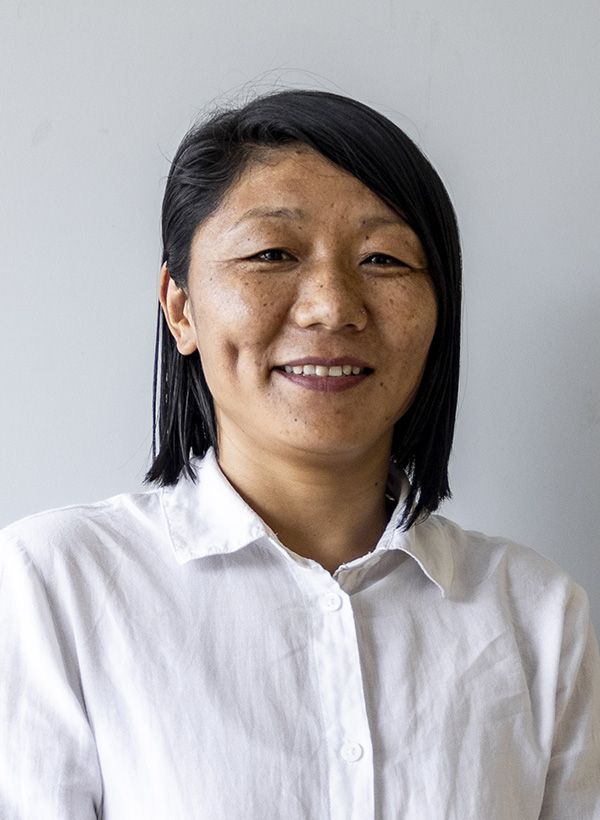
NIRMALA GURUNG 
+977 9801223978
nirmala@thamserku.com
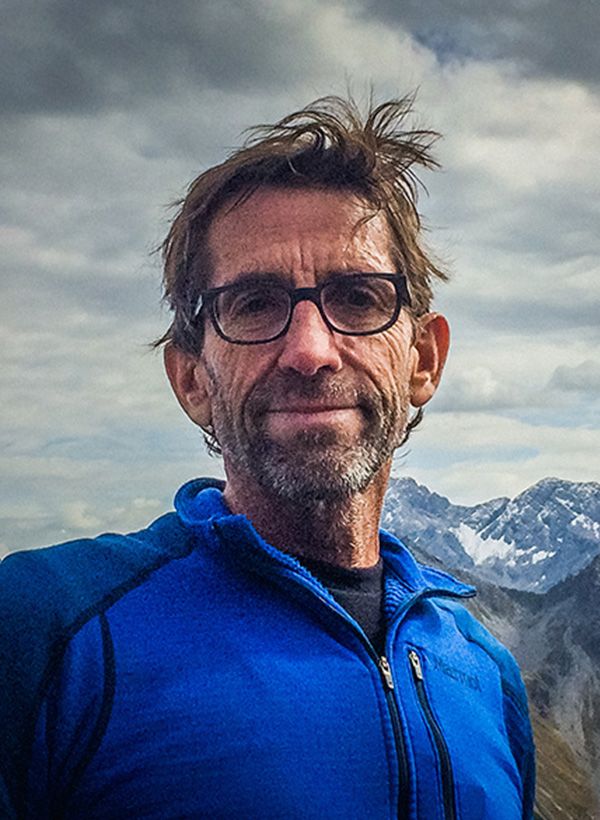
MICHAEL SCHOTT 


+49 174 9755492
m-schott@neumann-grafik.de
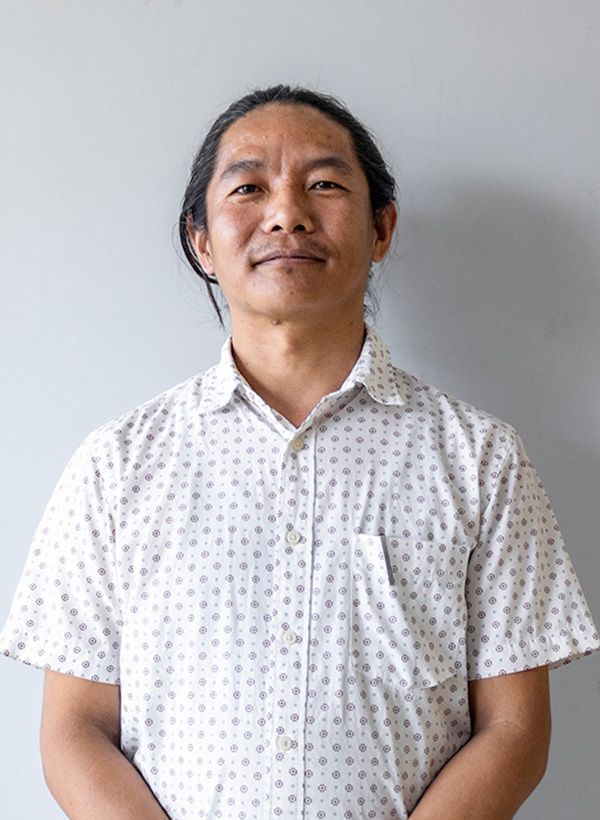
KUMAR RAI 
+977-9801236280
kumar@thamserkutrekking.com

NIMTE SHERPA 
+977-9801223977
info@thamserkutrekking.com
BOOK YOUR TRIP BOOK YOUR TRIP BOOK YOUR TRIP BOOK YOUR TRIP BOOK YOUR TRIP BOOK YOUR TRIP BOOK YOUR TRIP BOOK YOUR TRIP BOOK YOUR TRIP BOOK YOUR TRIP BOOK YOUR TRIP BOOK YOUR TRIP BOOK YOUR TRIP BOOK YOUR TRIP BOOK YOUR TRIP BOOK YOUR TRIP BOOK YOUR TRIP BOOK YOUR TRIP BOOK YOUR TRIP BOOK YOUR TRIP BOOK YOUR TRIP BOOK YOUR TRIP BOOK YOUR TRIP BOOK YOUR TRIP BOOK YOUR TRIP BOOK YOUR TRIP BOOK YOUR TRIP BOOK YOUR TRIP BOOK YOUR TRIP BOOK YOUR TRIP BOOK YOUR TRIP BOOK YOUR TRIP BOOK YOUR TRIP BOOK YOUR TRIP BOOK YOUR TRIP BOOK YOUR TRIP BOOK YOUR TRIP BOOK YOUR TRIP BOOK YOUR TRIP BOOK YOUR TRIP BOOK YOUR TRIP BOOK YOUR TRIP
